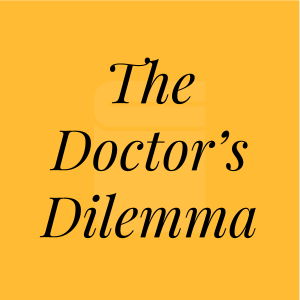
Overview
Synopsis
In 1906, George Bernard Shaw tackled a timeless debate of medicine and morality - how do doctors make ethical choices regarding the treatment of their patients? Do doctors prefer to take on and treat wealthy patients, rather than the poor? What are the ethics of such a decision? In The Doctor’s Dilemma, Sir Colenso Ridgeon has made a breakthrough discovery in the treatment of tuberculosis. However, because of the expense of this treatment, he has a limited number of patients that he can treat. Enter the beautiful Jennifer Dubedat, an enchanting woman whose husband is ill with tuberculosis. She begs Sir Colenso to save him, and so begins the doctor’s dilemma: The young man is a talented artist, but morally dubious character (and Sir Colenso is in love with his wife) - yet an old friend of the doctor’s, a poor man with little social value, needs treatment as well. Who does Sir Colenso save? And why? In this problem play, rife with satire and social commentary, Shaw tackles questions of moral responsibility as well as referencing new scientific and medical discoveries.
Show Information
Context
Plot
Characters
| Name | Part Size | Gender | Vocal Part |
|---|---|---|---|
|
Lead |
Male |
|
|
|
Lead |
Female |
|
|
|
Supporting |
Male |
|
|
|
Supporting |
Male |
|
|
|
Supporting |
Male |
|
|
|
Supporting |
Male |
|
|
|
Supporting |
Male |
|
|
|
Supporting |
Male |
|
|
|
Supporting |
Male |
|
|
|
Featured |
Female |
|
|
|
Featured |
Female |
|
|
|
Featured |
Male |
|
|
|
Featured |
Male |
|
Songs
A song with an asterisk (*) before the title indicates a dance number; a character listed in a song with an asterisk (*) by the character's name indicates that the character exclusively serves as a dancer in this song, which is sung by other characters.
Monologues
Scenes
Key Terms
Sorry! We do not currently have terms for this guide.
Videos
Quizzes
Themes, Symbols & Motifs
Sorry! We do not currently have learning modules for this guide.
Quote Analysis
Sorry! We do not currently have learning modules for this guide.
